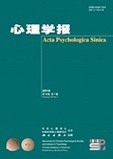In the digital economy era, leaders exert influence during work hours and non-work hours, expecting employees to be available after work hours and responsive to work-related matters immediately via electronic communication devices, henceforth named “after-hours electronic communication expectations” (AECE). Previous studies have suggested the pros and cons of AECE on employees’ job performance. A comprehensive framework that explains the mixed findings, however, is missed. The current study, drawing upon conservation of resources theory, proposes that leader AECE may affect employees’ job performance through three resource paths. Specifically, in the resource gain path, leader AECE improves employees’ job performance through organization-based self-esteem. In the resource loss path, leader AECE reduces job performance through stress perception. In the resource threat path, leader AECE reduces job performance through reputation maintenance concerns. Furthermore, we consider employee self-leadership as an important boundary condition and suggest that it can strengthen the resource gain effect and weaken the resource loss and threat effects (see Figure 1).
To verify the theoretical framework, we carried out an experimental study (Study 1) and a multi-wave, multi-source field study (Study 2). In Study 1, we recruited 224 full-time employees to participate in the experiment; 4 participants were dropped because they failed to pass the attention test or selected the same option for all items. Participants were randomly assigned to either the treatment group (i.e., high leader AECE group, n = 111) or the control group (i.e., low leader AECE group, n = 109). We first asked participants to imagine that they received a message from their supervisor at 9 PM. Then, different WeChat screenshots with AECE manipulation were provided. Specifically, in the treatment group (i.e., high AECE condition), leader sent three messages to express high AECE such as “Please respond ASAP”, as well as four unconnected voice calls. In the control group (i.e., low AECE condition), the leader sent two messages to express low AECE such as “Take your time, contact me when you are free”. After reading different screenshots, participants were instructed to complete measurements of a manipulation test, organization-based self-esteem, stress perception, reputation maintenance concerns, and demographic information.
Study 1 revealed that compared to the control group, participants in the treatment group reported higher levels of organization-based self-esteem (Treatment group: M = 4.21, SD = 0.42; Control group: M = 3.68, SD = 0.49; t(218)= 8.67, p < 0.001, Cohen’s d = 1.17). Similarly, there were significant differences in stress perception among participants from different groups (Treatment group:M = 3.78, SD = 1.01; Control group:M = 2.97, SD = 1.02; t(218)= 5.94, p < 0.001, Cohen’s d = 0.80). In addition, participants in the treatment group experienced more reputation maintenance concerns (M = 4.06, SD = 0.70) than those in the control group (M = 3.40, SD = 0.64), t(218)= 7.26, p < 0.001, Cohen’s d = 0.98. This finding confirmed the causal relationship between leader AECE and three mediators.
To improve external validity and test the full model, we conducted a multi-wave, multi-source field study. In Study 2, our sample comprised 418 full-time employees from state-owned enterprise in Guangdong Province and their direct supervisors initially. We collected data in three waves, with one month apart. In the first wave, the employees reported leader AECE, self-leadership, conscientiousness and demographic information. In the second wave, organization-based self-esteem, stress perception and reputation maintenance concerns were measured. In the third wave, we invited employees’ direct supervisors to report theses followers’ job performance. Finally, our sample included 346 employees, yielding a valid response rate of 82.78%.
The means, standard deviations, correlations, and reliabilities among all variables are presented in Table 1. Study 2 supported the resource gain path; that is, leader AECE was positively related to subordinates’ organization-based self-esteem (b = 0.09, p = 0.047). Also, organization-based self-esteem was positively related to job performance (b = 0.23, p < 0.001). A significant indirect effect of leader AECE on job performance via organization-based self-esteem was found (b = 0.02, SE = 0.01, 95% CI = [0.002, 0.047]). In the resource loss path, employees who received AECE from the leader were more likely to experience stress perception (b = 0.16, p = 0.008). But stress perception was not significantly related to job performance (b = 0.01, ns). In the resource threat path, leader AECE was positively related to reputation maintenance concerns (b = 0.16, p = 0.008) and reputation maintenance concerns was negatively related to job performance (b = -0.17, p = 0.002). Results also found that reputation maintenance concerns played a significant mediating role (b = -0.03, SE = 0.01, 95% CI = [-0.066, -0.006]). Furthermore, self-leadership moderated the effect between leader AECE and reputation maintenance concerns (b= -0.24, p = 0.002), such that the effect was insignificant when self-leadership was high (b= 0.01, ns), whereas a positive relationship was found when self-leadership was low (b= 0.25, p < 0.001; see Figure 2). Also, self-leadership moderated the indirect effect of leader AECE on job performance via reputation maintenance concerns, such indirect effect was insignificant when self-leadership was high (b = -0.001, SE = 0.01, 95% CI = [-0.022, 0.019]), whereas the indirect effect was insignificant when self-leadership was low (b = -0.04, SE = 0.02, 95% CI = [-0.092, -0.013]).
This study makes several important contributions. First, drawing on conservation of resources theory, we developed a new theoretical framework to investigate both the positive and negative effects of leader AECE on employees’ job performance, helping form a more comprehensive and dialectical understanding of the mixed effects. Second, by identifying the mediating mechanisms underlying the relationship between leaders’ AECE and job performance, this study explains why such a new phenomenon (i.e., leader AECE) has effects on employees. Third, the exploration of boundary condition is beneficial to provide guidance for mitigating the negative effects of leaders’ AECE.




